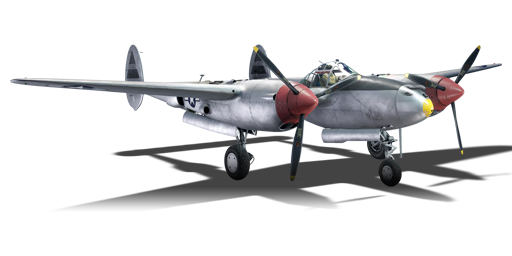

Aviation
XP-38G
II
Rank
AB
3.0
RB
3.3
SB
3.3
Battle rating
USA
Research country
Fighter
Main role

Premium vehicle
Status
General information
Flight performance
Max speed
at 8,229 m
660616687634 km/h
Rate of Climb
1814.622.414.6 m/s
Turn time
222420.923.1 s
Max altitude
12,192 m
Takeoff Run
380 m
Landing
flaps
flaps
Take-off
flaps
flaps
Combat
flaps
flaps
Air
brake
brake
General characteristics
Crew
1 person
Engine
Length
11.6 m
Wingspan
15.8 m
Wing Loading
232 kg/m²
Weight:
Base weight
6.236.436.076.39 t
Fuel in main tanks
0.82 t (1h 2m)
Limits:
Max Speed Limit (IAS)
790 km/h
Mach Number Limit
0.74 M
G limit
≈ -5/10 G
Flap Speed Limit (IAS)
L / T / C
250 / 495 / 566 km/h
Gear Speed Limit (IAS)
289 km/h
Offensive armament
20 mm AN/M2 cannon
Ammunition
150 rounds
Fire rate
600 shots/min
One-second Burst Mass
1.47 kg
| Belt | Belt filling | Armor penetration (mm) at a distance: | |||||
|---|---|---|---|---|---|---|---|
| 10 m | 100 m | 500 m | 1000 m | 1500 m | 2000 m | ||
| HEF-I/AP-T | 39 | 36 | 25 | 16 | 10 | 6 | |
| AP-T/AP-T/HEF-I/HEF-I | 39 | 36 | 25 | 16 | 10 | 6 | |
| HEF-I/HEF-I/HEF-I/AP-T | 39 | 36 | 25 | 16 | 10 | 6 | |
| AP-T/AP-T/AP-T/HEF-I | 39 | 36 | 25 | 16 | 10 | 6 | |
| HEF-I | 5 | 4 | 3 | 2 | 2 | 2 | |
4 × 12.7 mm M2 Browning machine gun
Ammunition
2,000 rounds
Fire rate
750 shots/min
One-second Burst Mass
0.54 kg
| Belt | Belt filling | Armor penetration (mm) at a distance: | |||||
|---|---|---|---|---|---|---|---|
| 10 m | 100 m | 500 m | 1000 m | 1500 m | 2000 m | ||
| T/Ball/Ball/I/AP-I | 28 | 26 | 18 | 11 | 7 | 4 | |
| AP-I/AP-I/AP-I/T/I | 28 | 26 | 18 | 11 | 7 | 4 | |
| T/AP/AP/AP/AP-I/I | 30 | 27 | 20 | 13 | 9 | 6 | |
| T/T/T/T/T/AP-I | 28 | 26 | 18 | 11 | 7 | 4 | |
| AP/AP-I/AP-I/I/I | 30 | 27 | 20 | 13 | 9 | 6 | |
Suspended armament
Setup 1
6 × M8 rocket
Economy
Repair cost
AB
755 

RB
3,046 

SB
1,521 

Crew training
6,900 

Experts
46,000 

Aces
320 

Research Aces
500,000 

Reward multiplier
AB / RB / SB
 2 x (55 / 160 / 235) %
2 x (55 / 160 / 235) % 
 2 x 130 %
2 x 130 % 

Premium vehicle
All modifications are unlocked
Flight performance | |
|---|---|
Survivability |
|---|
Weaponry | |
|---|---|
Rating by players
You must play more than 3 battles for the last week and more than 10 battles in a vehicle to rate it.
Like:
19
Flight performance:
Not enough ratings
Survivability:
Not enough ratings
Aerial combat:
Not enough ratings
Ground attack:
Not enough ratings
Balance:
Not enough ratings
Tips & Tricks
This space is currently empty
Do you know any interesting vehicle features?
Loading...
No articles about this vehicle yet
Become the first author and get rewards!
Write a guide, tell about interesting historical facts, make a tutorial or simply an interesting post.
No more content